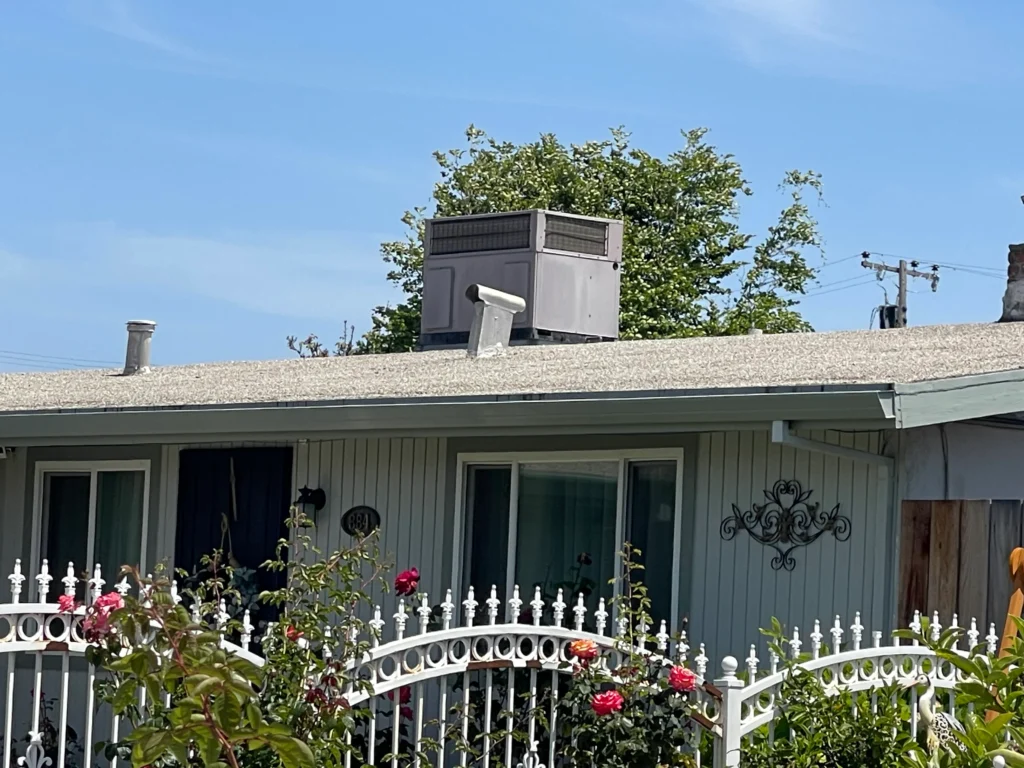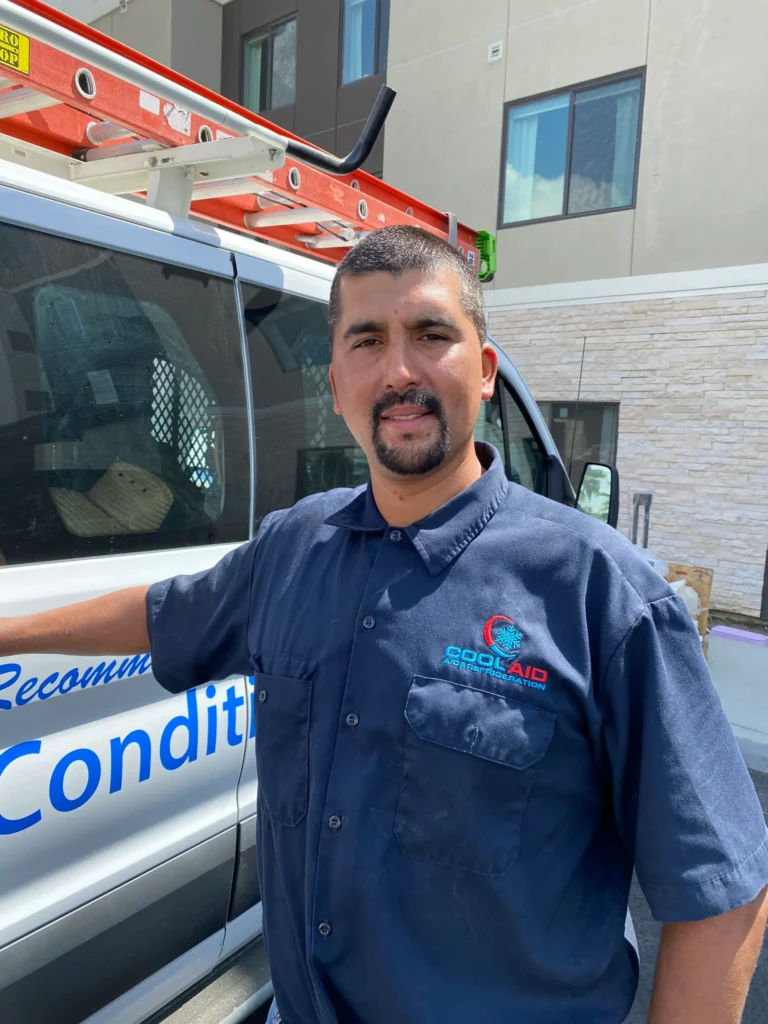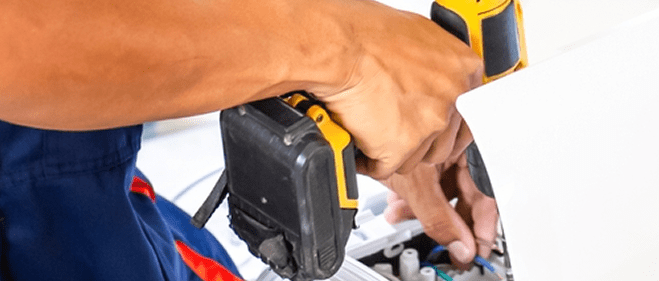Residential HVAC Installation Services
Table of Contents
New Residential HVAC Installation Services
Installing a new HVAC system in your home is one of the most important investments you can make for your family’s comfort, health, and your property’s value. Whether you’re building a new home, adding an addition, or replacing an outdated system, professional HVAC installation ensures optimal performance, energy efficiency, and long-term reliability.
Many homeowners underestimate the complexity of HVAC installation, assuming any contractor can handle the job. The reality is that improper installation can reduce system efficiency by 30% or more, void manufacturer warranties, and create safety hazards that threaten your family’s wellbeing. Professional installation makes the difference between a system that delivers decades of reliable service and one that creates ongoing problems.
This comprehensive guide reveals how professional HVAC installation maximizes your investment, explores the various system types available for modern homes, and demonstrates why indoor air quality improvements should be part of every installation project.

Installing the Perfect System for Your Home
Every home has unique characteristics that affect HVAC system performance, from architectural features and insulation levels to room layouts and local climate conditions. Professional installation begins with comprehensive assessment to identify the optimal system type and configuration for your specific situation.
The Bay Area’s diverse microclimates create additional challenges that require local expertise. Coastal homes face different heating and cooling demands than inland properties, while hillside locations experience different weather patterns than valley floors.
Central AC, Heat Pumps, Furnaces, and Mini-Splits
Central air conditioning systems provide whole-house cooling through ducted distribution that delivers conditioned air to every room. These comprehensive systems work with existing ductwork or newly installed distribution networks to provide consistent comfort throughout your home.
Split system configurations separate indoor and outdoor components for optimal efficiency and quiet operation. The outdoor condensing unit handles heat rejection while the indoor evaporator coil integrates with your heating system for year-round comfort control.
Ducted system design ensures proper airflow distribution that eliminates hot spots while maintaining energy efficiency. Professional duct sizing calculations consider room loads, distance from equipment, and pressure drop to optimize performance throughout your home.
Variable-speed systems adjust output to match actual cooling demand, providing more consistent temperatures while reducing energy consumption by 20-30% compared to single-speed equipment. These advanced systems also provide better humidity control during moderate weather conditions.
Heat pump systems provide both heating and cooling through efficient refrigeration technology that can reduce energy costs by 40-60% compared to traditional heating systems. Modern heat pumps work effectively in Bay Area climates while providing year-round comfort.
Air-source heat pumps extract heat from outdoor air even during cold weather, providing efficient heating that works well in the Bay Area’s moderate winter conditions. Advanced cold-climate models maintain efficiency even when temperatures drop significantly.
Ground-source heat pumps utilize stable soil temperatures for exceptional efficiency but require adequate property space for ground loop installation. These systems provide superior efficiency while operating very quietly compared to air-source alternatives.
Dual-fuel systems combine heat pump efficiency with gas furnace reliability, automatically switching between systems based on outdoor temperature and operating costs. This hybrid approach provides optimal efficiency while ensuring adequate heating during extreme weather.
Gas furnace installations provide reliable, cost-effective heating for homes with natural gas service. Modern high-efficiency furnaces achieve 90-98% efficiency ratings while providing consistent warmth throughout your home.
Condensing furnaces capture additional heat from combustion gases through secondary heat exchangers, achieving efficiency ratings above 90%. These systems require proper drainage for condensate removal while providing exceptional heating efficiency.
Modulating gas valves in premium furnaces adjust heat output precisely to match demand, providing more consistent temperatures while reducing energy consumption. Variable-speed blowers enhance comfort while reducing operating noise.
Safety features including flame sensors, pressure switches, and automatic shutoffs ensure reliable operation while protecting your family from potential hazards. Professional installation ensures all safety systems operate correctly while meeting local code requirements.
Ductless mini-split systems offer flexible zone-based heating and cooling without requiring extensive ductwork installation. These systems work particularly well for additions, converted spaces, or homes where traditional ducted systems aren’t practical.
Multi-zone systems connect multiple indoor units to single outdoor condensers, providing independent temperature control for different areas. Each zone operates independently while sharing the outdoor unit’s capacity efficiently.
Indoor unit placement affects both performance and aesthetics, requiring careful consideration of airflow patterns, electrical access, and visual impact. Professional installation ensures optimal placement while maintaining architectural appeal.
Refrigerant line installation requires specialized tools and techniques for working with small-diameter copper tubing that connects indoor and outdoor units. Professional line work prevents leaks while ensuring optimal refrigerant flow and system performance.
HVAC Installation by Licensed Technicians
Professional HVAC installation requires specialized expertise that combines mechanical, electrical, and safety knowledge with hands-on experience installing complex systems. Licensed technicians understand local codes, manufacturer requirements, and best practices that ensure optimal performance.
The quality of installation work directly affects system efficiency, reliability, and service life. Professional installation protects your investment while ensuring you receive the full benefits that modern HVAC systems provide.
Code-Compliant, Guaranteed Workmanship
Professional licensing requirements ensure technicians possess the knowledge and training necessary for safe, effective HVAC installation. California requires specific licensing for HVAC work that includes education, experience, and testing requirements.
Continuing education keeps licensed professionals current with evolving technology, changing codes, and new safety requirements. This ongoing training ensures your installation meets current standards while incorporating latest best practices.
Insurance and bonding protection safeguards homeowners from liability while ensuring recourse if problems develop. Professional contractors maintain comprehensive coverage that protects both workers and property during installation projects.
Building code compliance ensures installations meet all safety, efficiency, and performance standards required by local authorities. Bay Area jurisdictions have specific requirements that professional contractors understand and implement.
Permit acquisition and inspection coordination streamlines the regulatory process while ensuring all work meets code requirements. Professional contractors handle permit applications, schedule inspections, and address any issues that arise during the approval process.
Electrical code compliance ensures safe power connections while providing adequate electrical service for system operation. HVAC systems require dedicated circuits, proper grounding, and appropriate disconnect switches that meet electrical safety standards.
Gas line work for furnace installations requires specialized licensing and testing to ensure safe connections. Professional gas line installation prevents leaks while ensuring adequate supply pressure for optimal equipment performance.
Quality workmanship guarantees demonstrate contractor confidence while protecting homeowners from installation defects. Professional warranties cover both materials and labor while providing recourse if problems develop.
Installation inspection protocols ensure every aspect of system installation meets professional standards before project completion. Multi-point inspections verify proper connections, adequate clearances, and optimal performance.
Performance testing validates system operation while ensuring installations achieve rated efficiency and capacity. Professional commissioning includes airflow measurement, temperature verification, and control system programming.
Documentation and maintenance instructions help homeowners understand their new system while supporting ongoing care that maintains peak performance. Professional handover includes system operation training and maintenance scheduling.

Improve Indoor Air Quality & Year-Round Comfort
Humidity Control, Filtration & Zoning Available
Whole-house filtration systems remove airborne particles, allergens, and pollutants that affect indoor air quality and family health. Advanced filtration works seamlessly with new HVAC installations while requiring minimal maintenance. High-efficiency particulate air (HEPA) filters capture particles as small as 0.3 microns, removing dust, pollen, pet dander, and other allergens. These filters provide superior air cleaning while maintaining adequate airflow for system efficiency. Electronic air cleaners use charged plates to capture particles electrically, providing effective filtration without the pressure drop that dense filters create. These systems wash clean for ongoing performance while eliminating filter replacement costs. UV germicidal lights destroy bacteria, viruses, and mold spores as air passes through your HVAC system. These lights install in ductwork or air handlers to provide continuous air sanitization while requiring minimal maintenance. Humidity control systems maintain optimal indoor humidity levels year-round, improving comfort while preventing mold growth and structural damage. Proper humidity control makes your home feel more comfortable at moderate temperature settings. Whole-house humidifiers add moisture during dry winter months when heating systems remove humidity from indoor air. Proper humidification prevents dry skin, static electricity, and wood damage while improving respiratory comfort. Dehumidification systems remove excess moisture during humid summer weather, preventing mold growth while improving comfort. Whole-house dehumidifiers work with your cooling system to maintain optimal humidity levels efficiently. Smart humidity controls automatically adjust moisture levels based on outdoor conditions and indoor requirements. These systems optimize comfort while preventing the problems that excessive or insufficient humidity creates. Zoning systems provide independent temperature control for different areas of your home, eliminating hot and cold spots while reducing energy consumption in unused spaces. Zoned systems work particularly well in multi-story homes or spaces with varied usage patterns. Motorized dampers control airflow to different zones based on individual thermostats and occupancy sensors. Each zone can be heated or cooled independently while sharing the main HVAC system’s capacity efficiently. Zone control panels coordinate system operation while balancing airflow between active zones. Smart panels can learn usage patterns while optimizing energy consumption based on occupancy and time of day. Wireless thermostats for individual zones provide convenient control while eliminating extensive wiring requirements. These systems enable precise temperature control while supporting energy-saving strategies like setback programming. Ventilation improvements ensure adequate fresh air exchange while maintaining energy efficiency through heat recovery systems. Proper ventilation removes indoor pollutants while preventing the stuffiness that tightly sealed homes can experience. Energy recovery ventilators (ERVs) bring in fresh outdoor air while recovering heat and moisture from exhaust air. These systems maintain indoor air quality while minimizing energy penalties from ventilation air. Heat recovery ventilators (HRVs) provide similar benefits in drier climates while focusing on temperature recovery rather than moisture transfer. Both systems work automatically to maintain optimal indoor air quality.
Emergency HVAC Issues We Fix
Your system may need urgent attention if you’re experiencing:
- No airflow from vents
- Furnace blowing cold air
- AC blowing warm air
- System won’t turn on
- Iced-over AC or refrigerant line
- Thermostat not responding
- Loud, unusual noises from the unit
- Weak airflow or poor indoor air quality
- Water leaks around the unit
- Burning smells or electrical odor
- Complete system failure
If you notice any of these signs, don’t wait. Contact COOL AID for immediate HVAC help.
Serving the Bay Area with Trusted Home HVAC Installs
Fast Scheduling, Clean Installation, No Mess Left Behind
Efficient project scheduling minimizes disruption to your daily routine while ensuring adequate time for quality installation. Professional contractors coordinate material delivery, permitting, and installation phases to optimize project flow. Expedited scheduling accommodates urgent installation needs including system failures during extreme weather. Emergency installation capabilities ensure your family’s comfort while maintaining installation quality standards. Weather contingency planning addresses Bay Area’s variable conditions that could affect installation timing. Professional contractors maintain flexible schedules while protecting equipment and work areas from weather exposure. Pre-installation consultations confirm project details while addressing any last-minute concerns or modifications. These meetings ensure complete understanding while preventing delays during actual installation work. Clean installation practices protect your home while ensuring professional results that enhance rather than detract from your property. Professional contractors take pride in leaving installations that look as good as they perform. Drop cloth protection covers floors, furniture, and fixtures during installation to prevent damage from tools, materials, or debris. Professional protection goes beyond basic requirements to ensure complete property protection. Dust containment systems minimize the spread of construction dust while maintaining clean working conditions. Professional contractors use appropriate barriers and filtration to protect indoor air quality during installation. Daily cleanup procedures maintain orderly work areas while preventing accumulation of debris that could create safety hazards or property damage. Professional contractors clean as they work rather than leaving cleanup until project completion. Complete debris removal ensures your property is left clean and ready for immediate use after installation completion. Professional contractors handle all waste materials while recycling appropriate components responsibly. Old equipment removal and disposal includes environmentally responsible recycling of refrigerants, metals, and other materials. Professional disposal prevents environmental contamination while complying with regulatory requirements. Final cleanup inspection ensures no debris or materials are left behind while verifying complete project completion. Professional contractors take pride in leaving installations that exceed customer expectations. Landscape restoration addresses any disturbed areas around outdoor equipment while ensuring proper drainage and clearances. Professional installation protects landscaping while creating attractive outdoor equipment placement.Transform Your Home with Professional HVAC Installation
Professional HVAC installation represents an investment in your family’s comfort, health, and your home’s value that delivers benefits for decades. Quality installation ensures you receive the full performance potential that modern systems provide while avoiding problems that amateur work creates.
The difference between adequate and exceptional HVAC installation often determines long-term satisfaction and system reliability. Professional installation protects your investment while ensuring optimal performance from day one.
Energy efficiency, indoor air quality, and comfort improvements from professional installation provide lasting value that compounds over years of reliable operation. These benefits justify investment in quality installation that delivers superior results.
Don’t trust your family’s comfort to inadequate installation that could compromise performance and reliability. Professional HVAC installation combines technical expertise with quality workmanship to deliver systems that exceed expectations while providing lasting satisfaction.
Ready to enhance your home with professional HVAC installation that delivers superior comfort and efficiency? Contact 1800CoolAid today for expert residential HVAC installation services throughout the Bay Area. Our licensed technicians provide code-compliant installation with guaranteed workmanship, clean practices, and comprehensive system solutions that improve your home’s comfort and indoor air quality. Don’t settle for standard installation—invest in the professional HVAC installation your family deserves.
Frequently Asked Questions
How long does residential HVAC installation take?
Most residential installations take 1-3 days depending on system complexity and any required ductwork modifications. We provide accurate timeframes during consultation while working efficiently to minimize disruption to your daily routine.
Do I need permits for HVAC installation?
Yes, most HVAC installations require building permits to ensure code compliance and safety. We handle all permit applications and coordinate inspections throughout the installation process, ensuring full regulatory compliance.
What's included in professional HVAC installation?
Our complete installation includes equipment setup, electrical connections, ductwork modifications as needed, system testing and commissioning, cleanup, and operator training. We also handle permits, inspections, and warranty registration.
Serving the Entire Bay Area
We proudly serve customers in:
